Swedish Army Museum
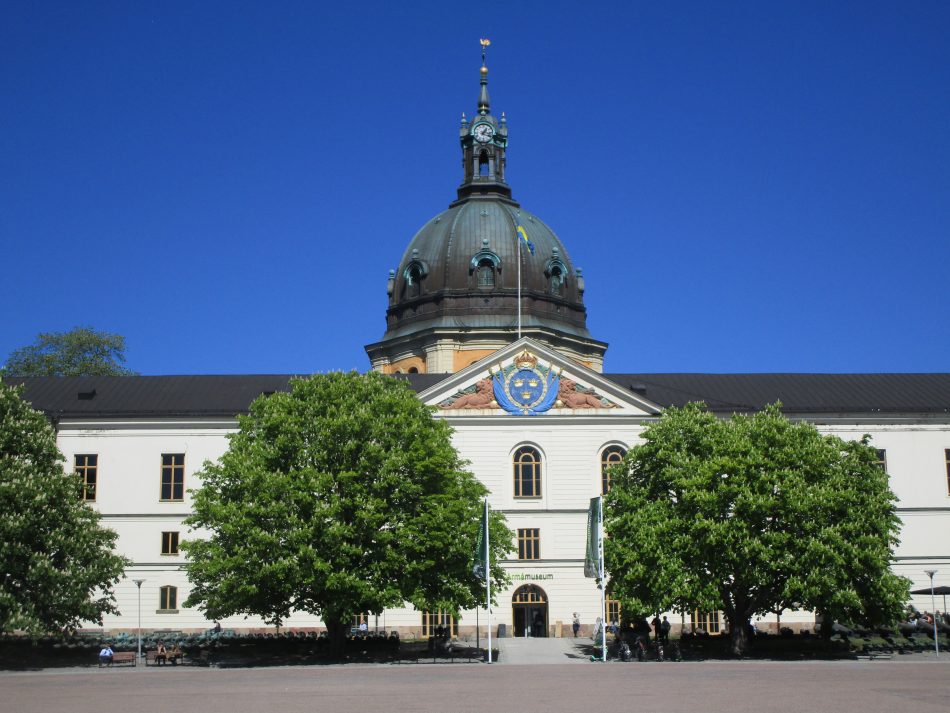
By Robert Kelly
This is part two of my Grand Tour of Europe museum reports. We booked a Baltic Cruise out of Copenhagen with stops in Stockholm, Tallinn, Helsinki, and Saint Petersburg and sailed in mid-May. Due to the war in Ukraine, the cruise company offered us an extra day in Stockholm instead of stopping in Saint Petersburg. We took them up on the offer but were disappointed we couldn’t visit Russia. After the first day in Stockholm, we were glad to have an extra day in town. There is so much to see that if we hadn’t had the second day, I probably wouldn’t have made it to the Swedish Army Museum.
The museum is located in the downtown core and is not far from the harbour. I was able to walk there in no time. Stockholm is an expensive place to visit and fortunately, the museum offered free admission. A rare bargain indeed.
Here is everyone’s favourite Swedish tank, the S Tank on gate duty. Unfortunately, it was the only armoured vehicle out front. And there was room for more. That seems to be a trend in Europe. You find very few large vehicles at the downtown museums, but they usually have separate tank museums.
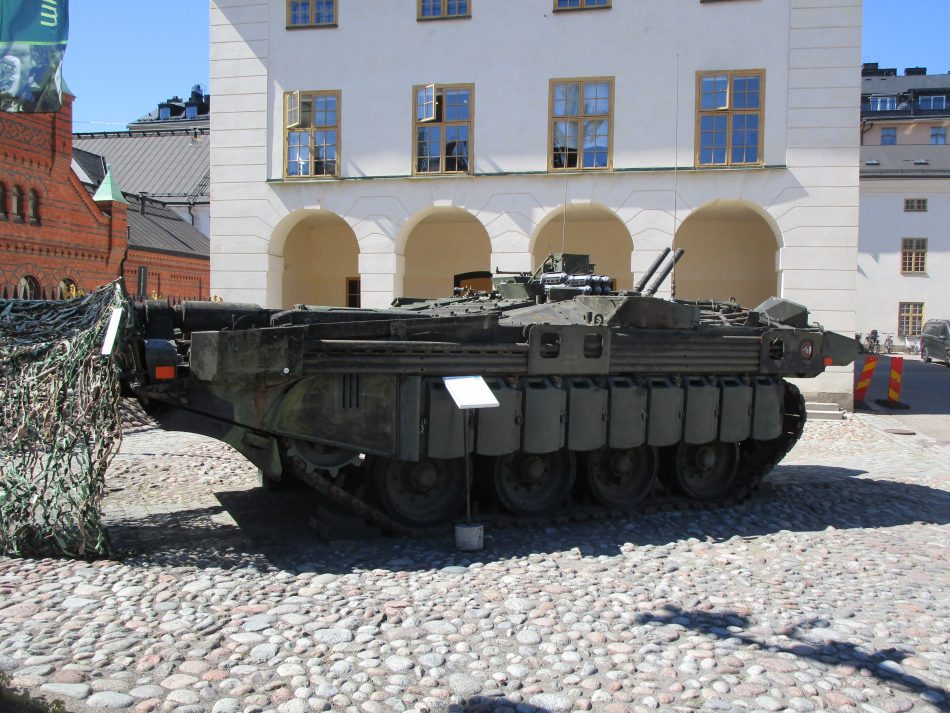
The first area covered the years 1520 to1660.
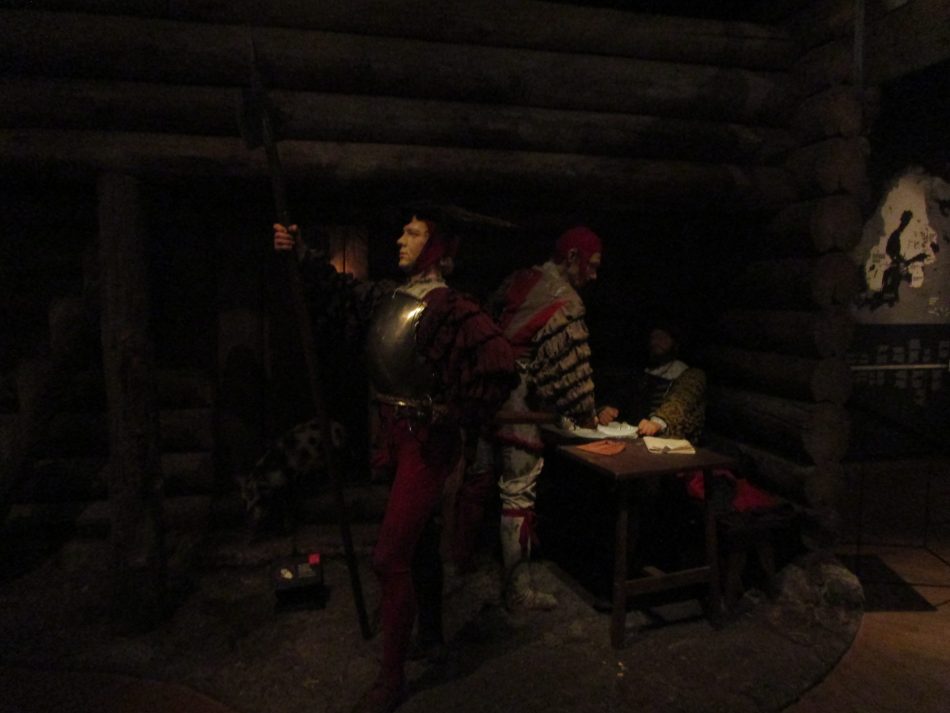
Here is a very impressive model. They then did a close up using larger models. I’ve never seen this before, but it’s brilliant.
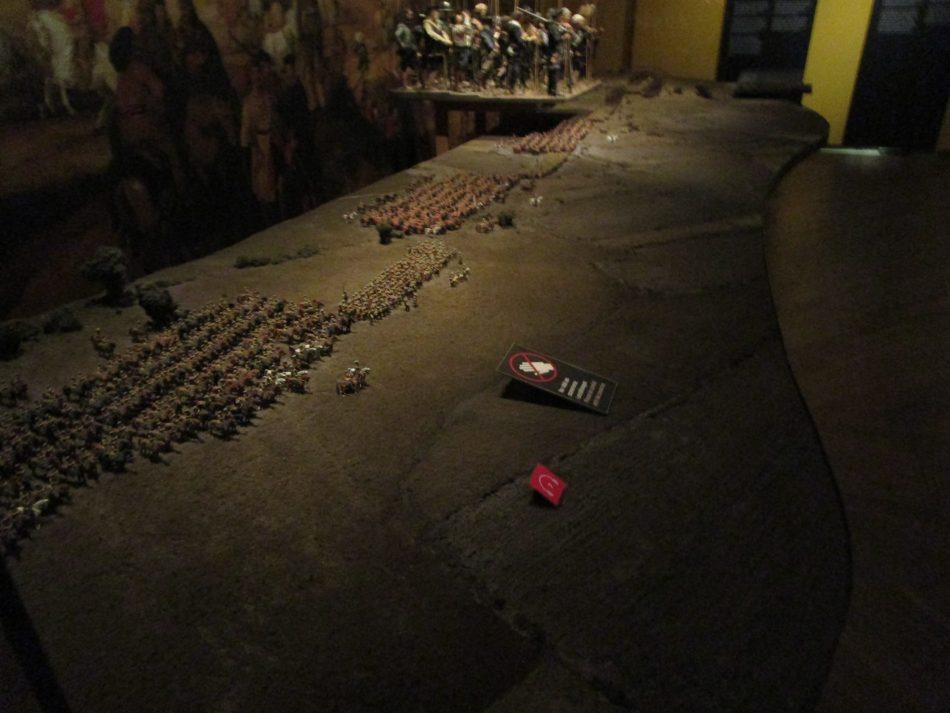
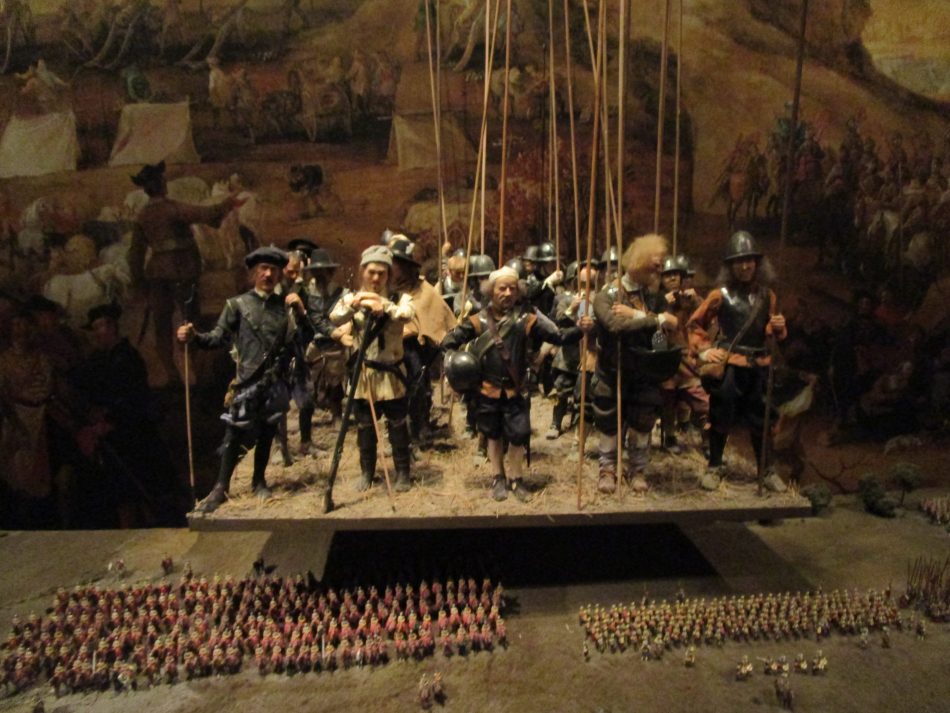
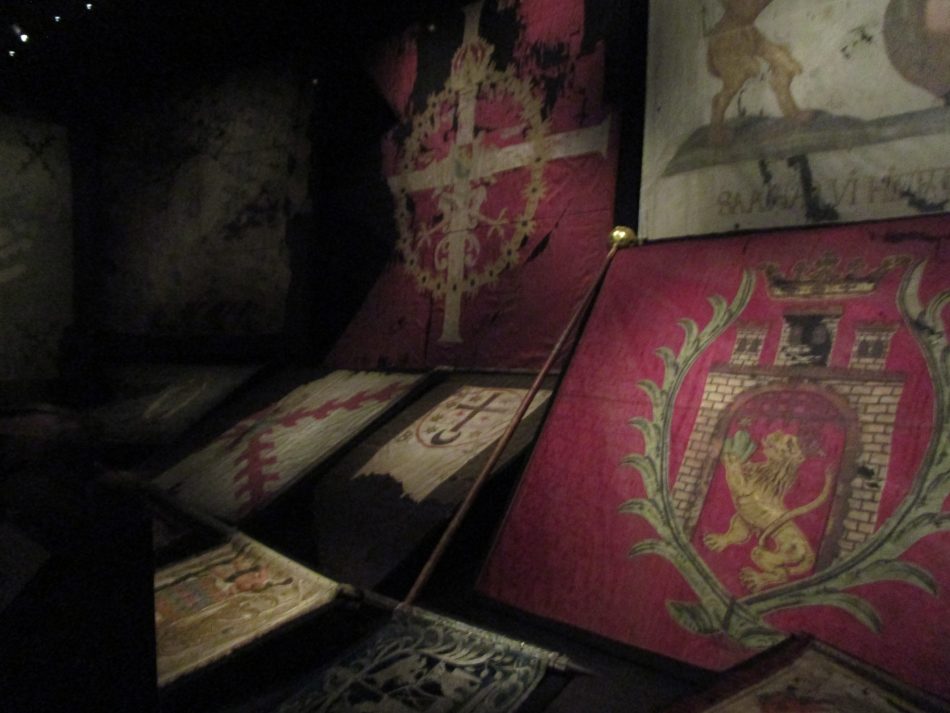
And another impressive model. Unfortunately as is the case in most museums, the lighting is very poor in order to preserve the artifacts.
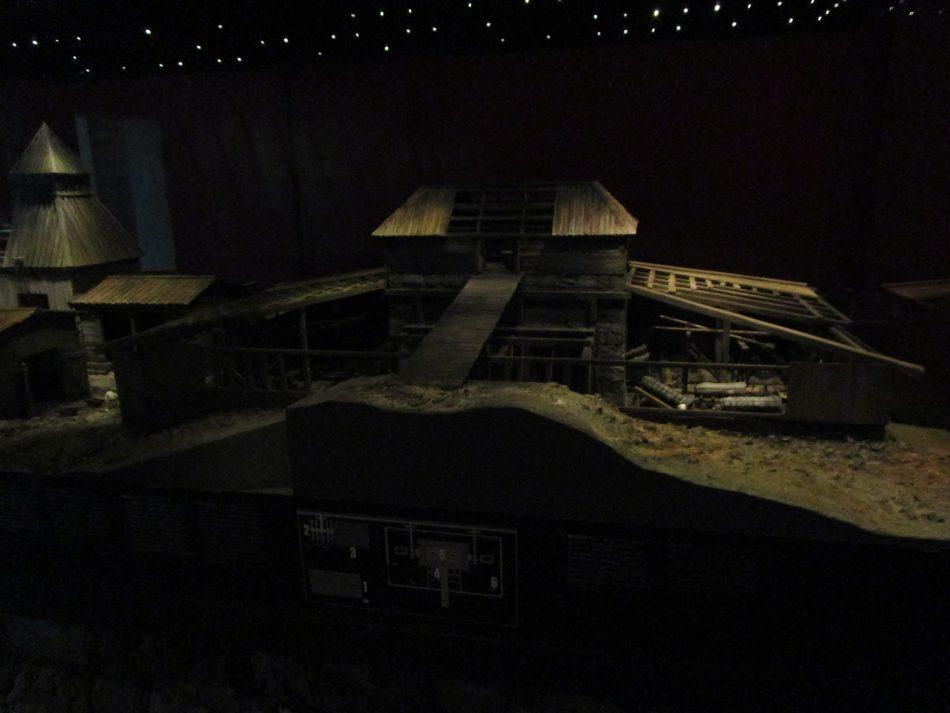
The second area covered the years 1660 to1743, the highlight being coverage of the Great Northern War. The war pitted the Swedes against Russia and her allies (generally every other country in the region) with Sweden coming out on the losing side. They did have some very impressive full-sized dioramas. Setting them in the winter really made you feel for the soldiers fighting that war.
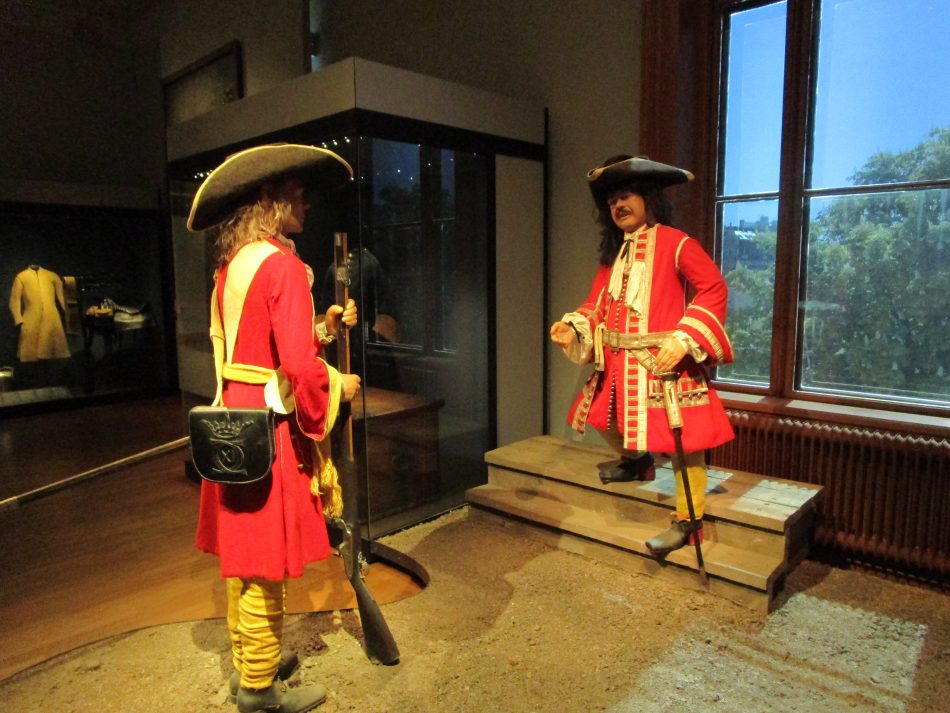
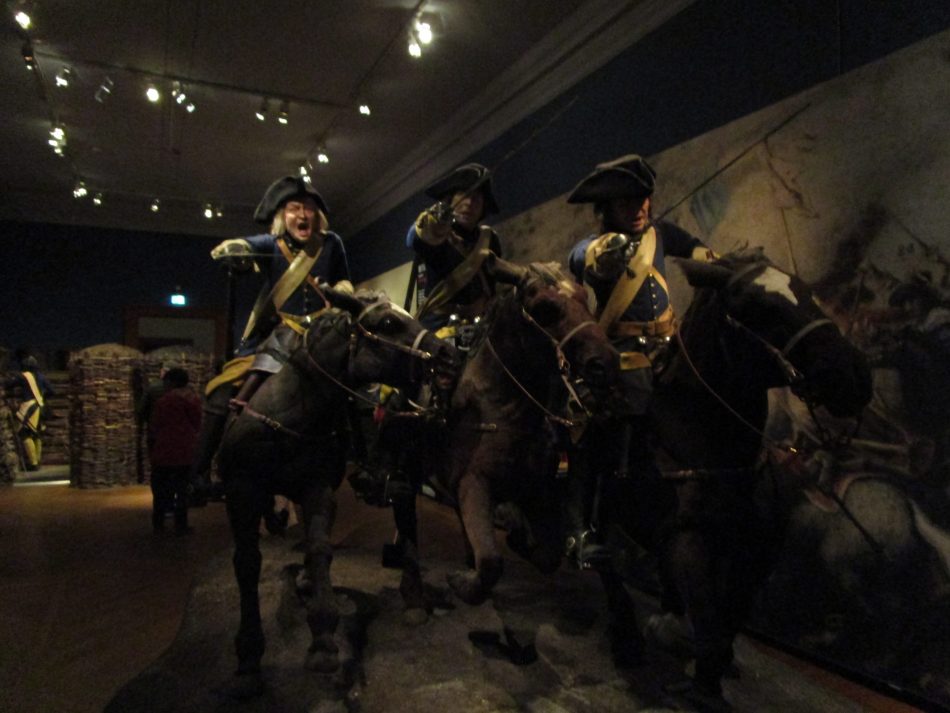
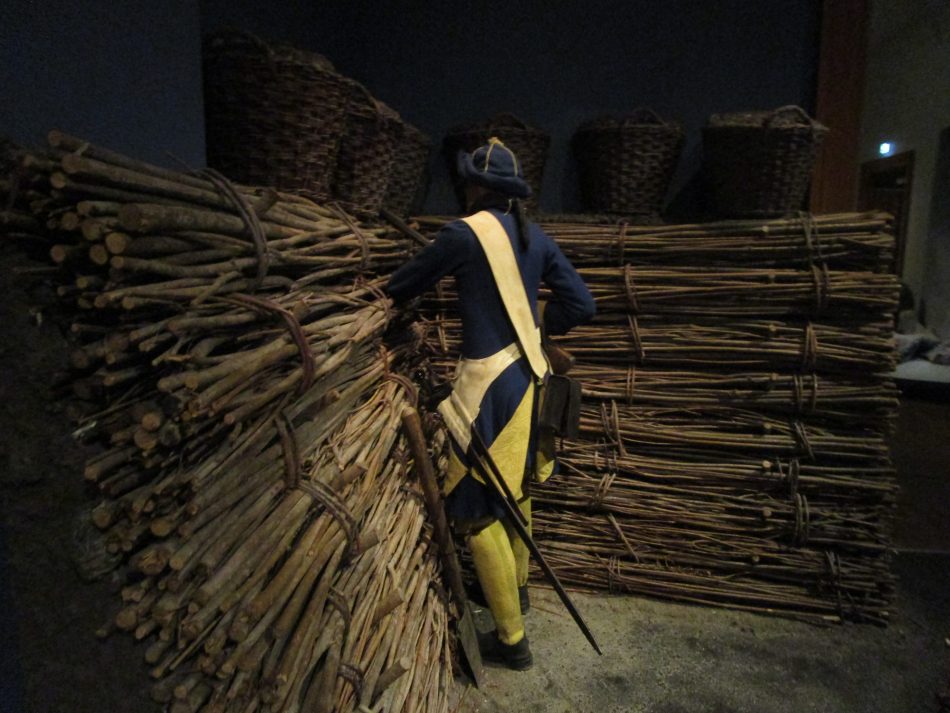
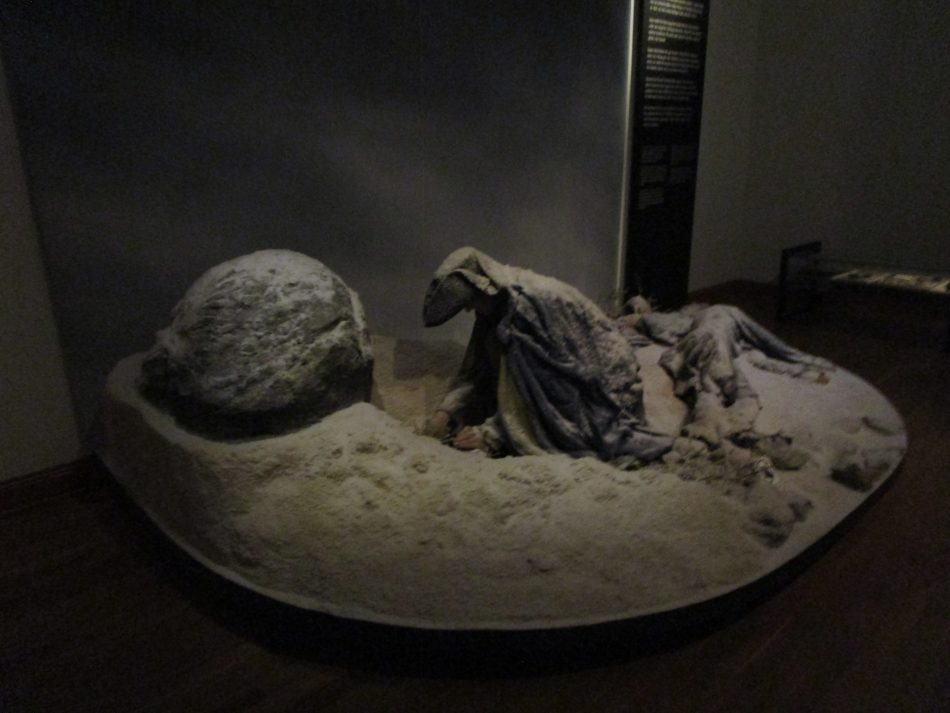
The next area covered the years 1743 to1815 including Finnish War of 1808-09, yet another Swedish loss. For some reason the first few dioramas covered punishments. Here is one of them.
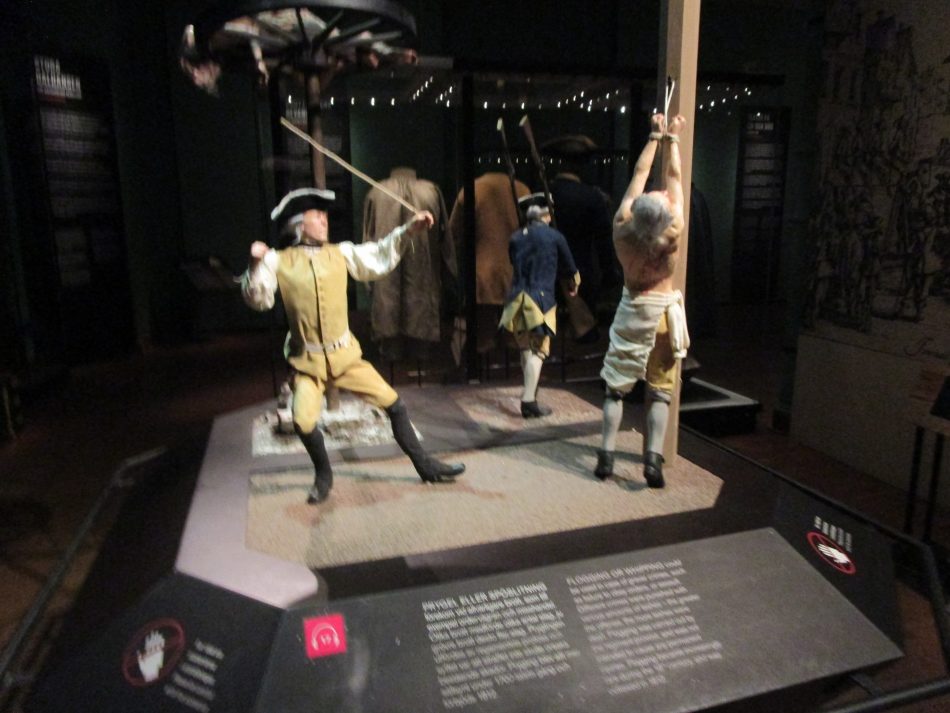
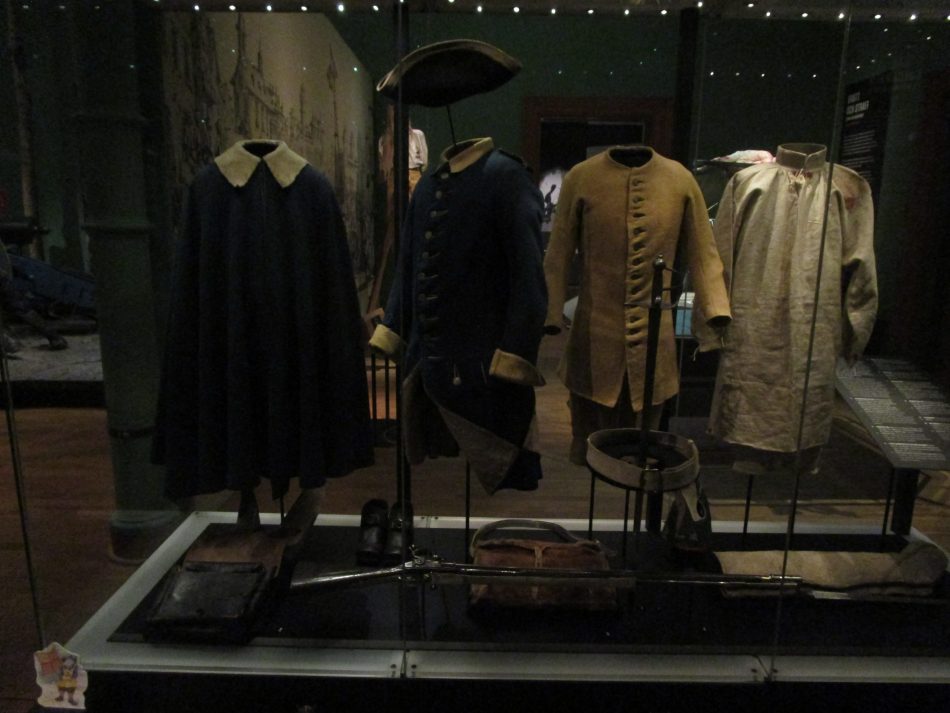
Here are some Napoleonic era scenes including the head dress on the gun detachment that was popular throughout Scandinavia at the time.
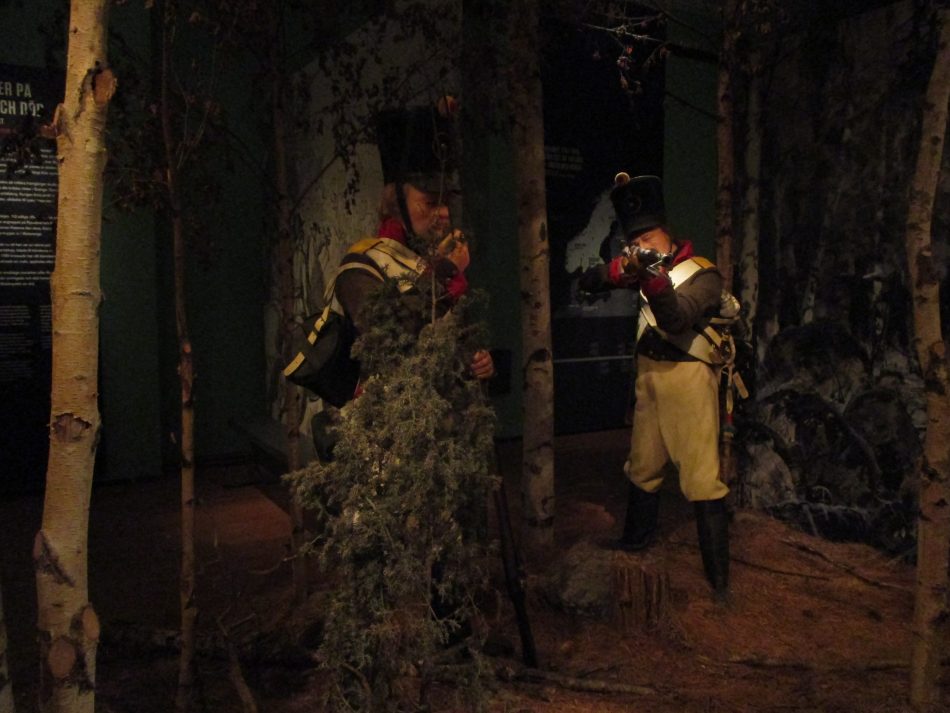
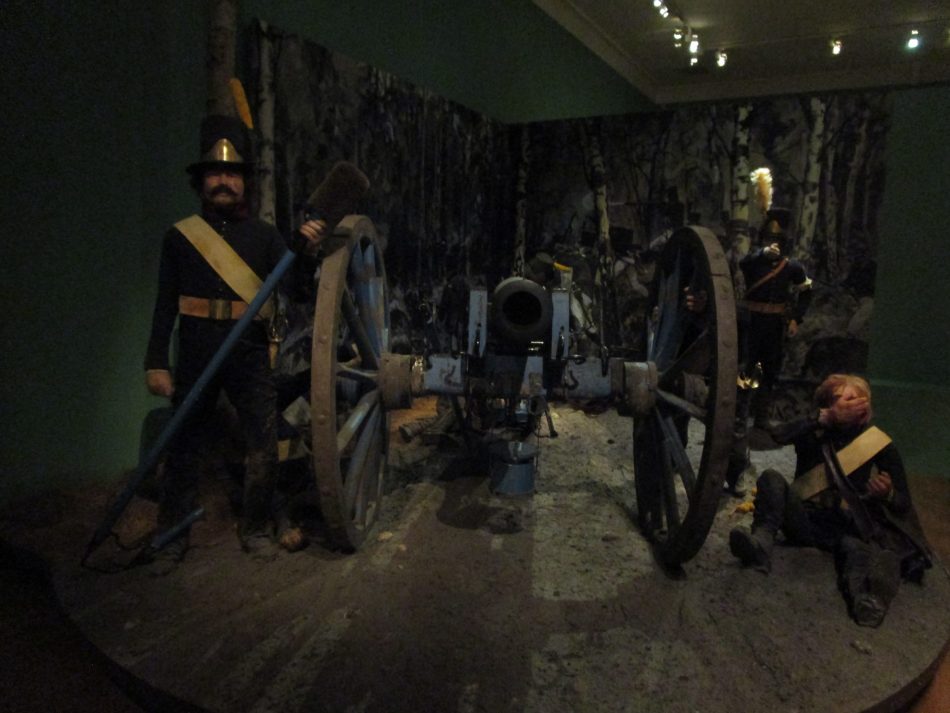
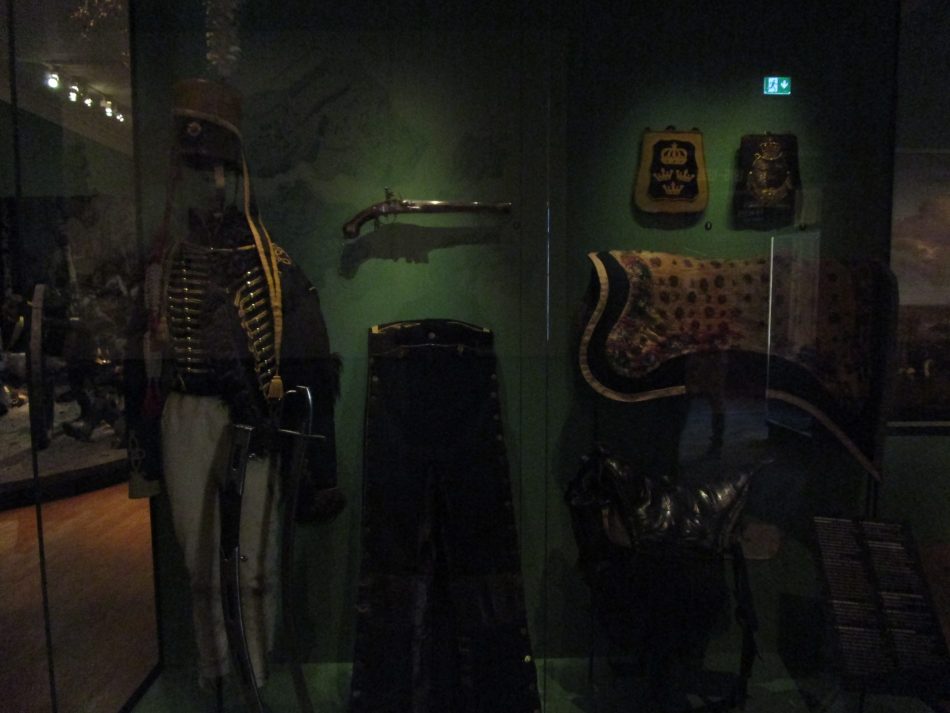
Next up is the period of 1815 to 1899. It was a very quiet time for the Swedes and the displays covered garrison life including a model of an army barracks from that time.
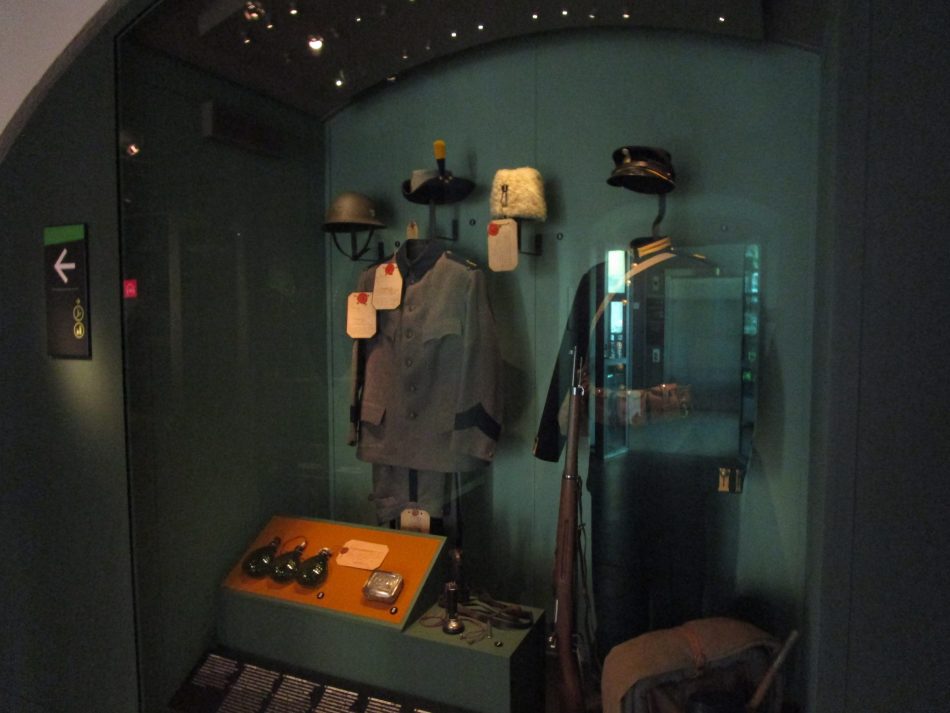
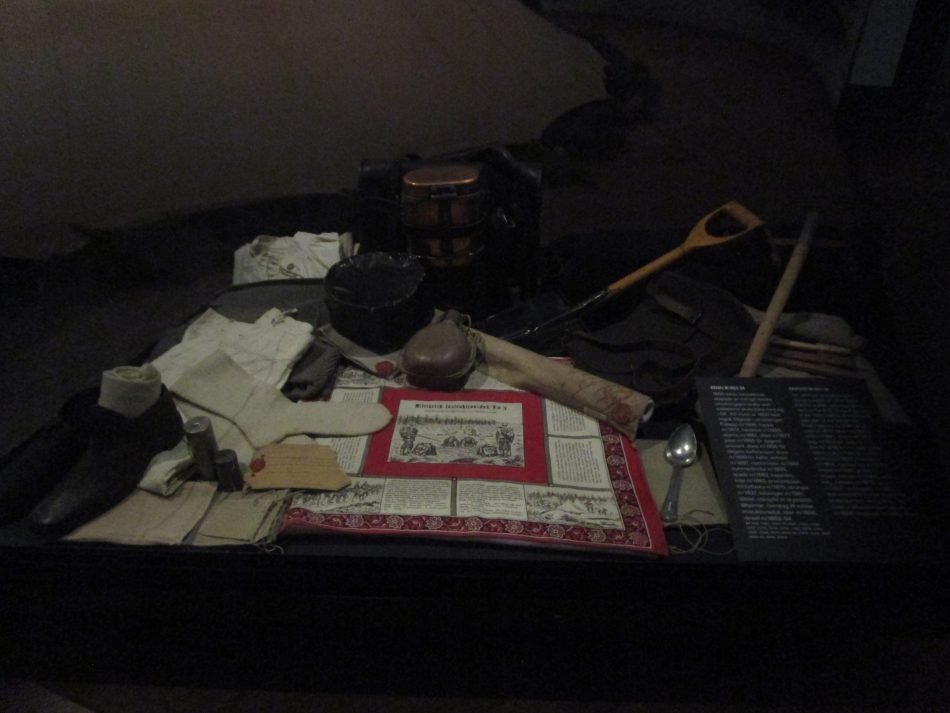
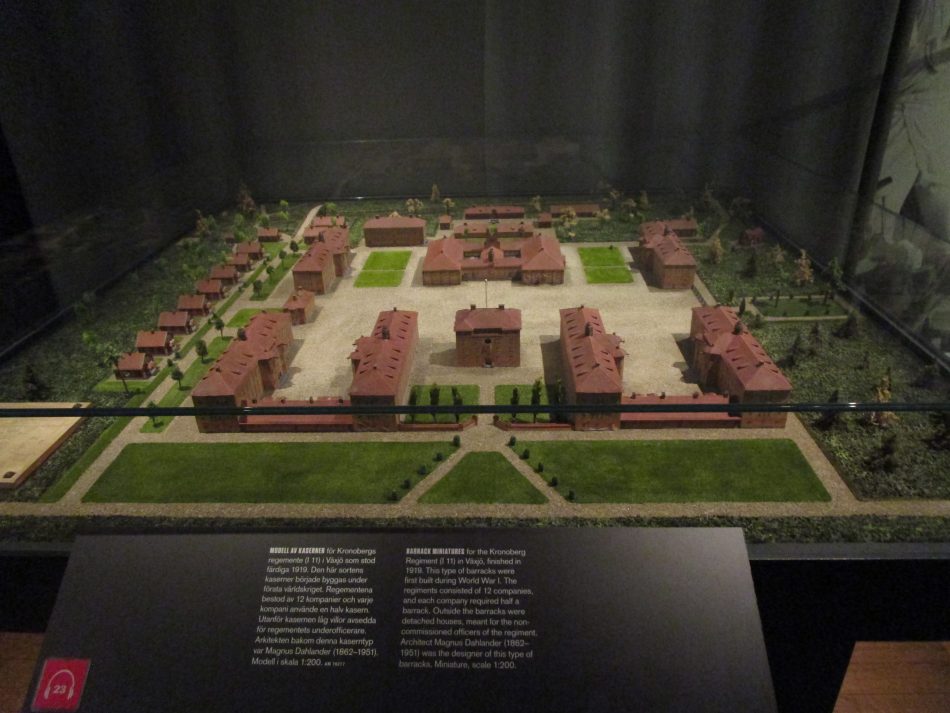
This photo shows a well-stocked quartermaster store building during WW2.
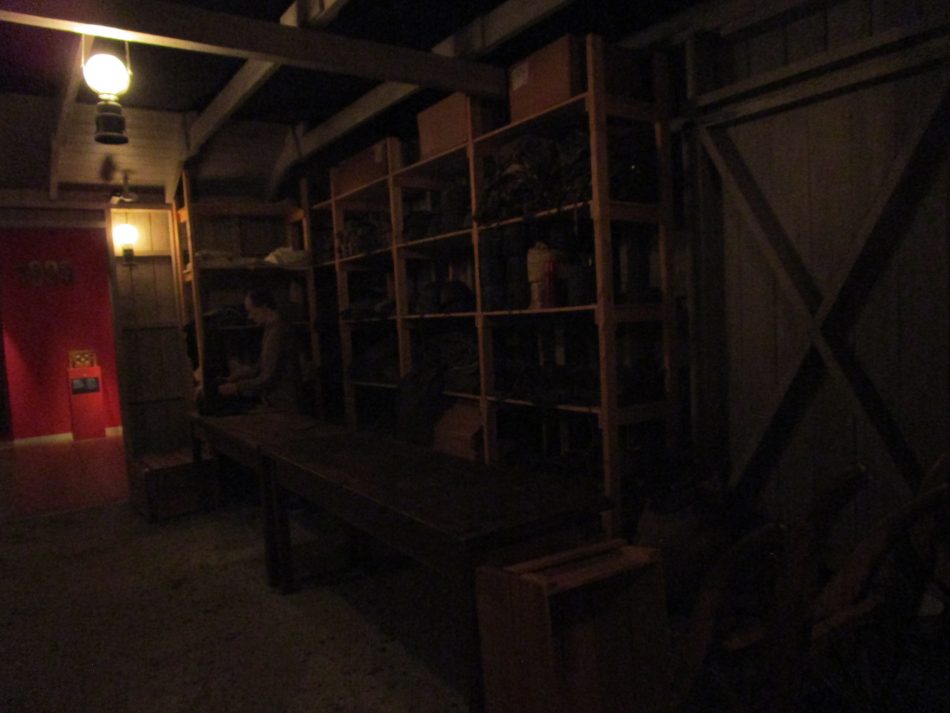
Although Sweden was neutral during WW2, they did suffer from the same sort of shortages that other countries experienced due to the lack of international trade. They had rationing and people had to become imaginative in their cooking squirrel, crow, and badger. The sign in the photos describes the shortages and the photo shows firewood stacked downtown for winter. Another thing I learned was that anti-aircraft batteries were manned throughout the war and there were the occasional blackouts ordered by the government just like in London during the blitz.
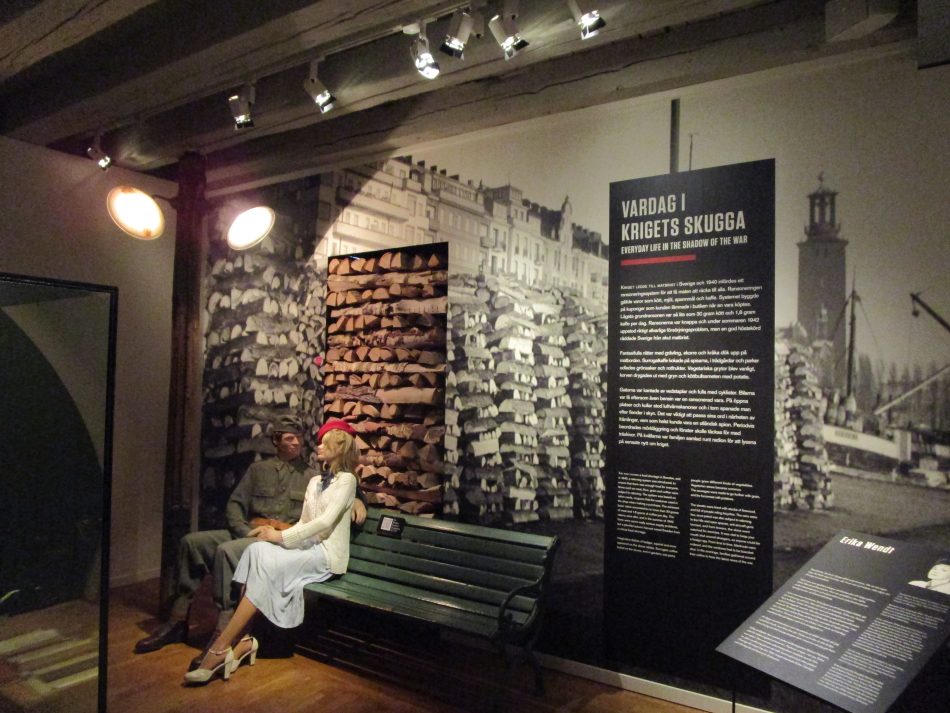
A well-dressed ski trooper of the time period.
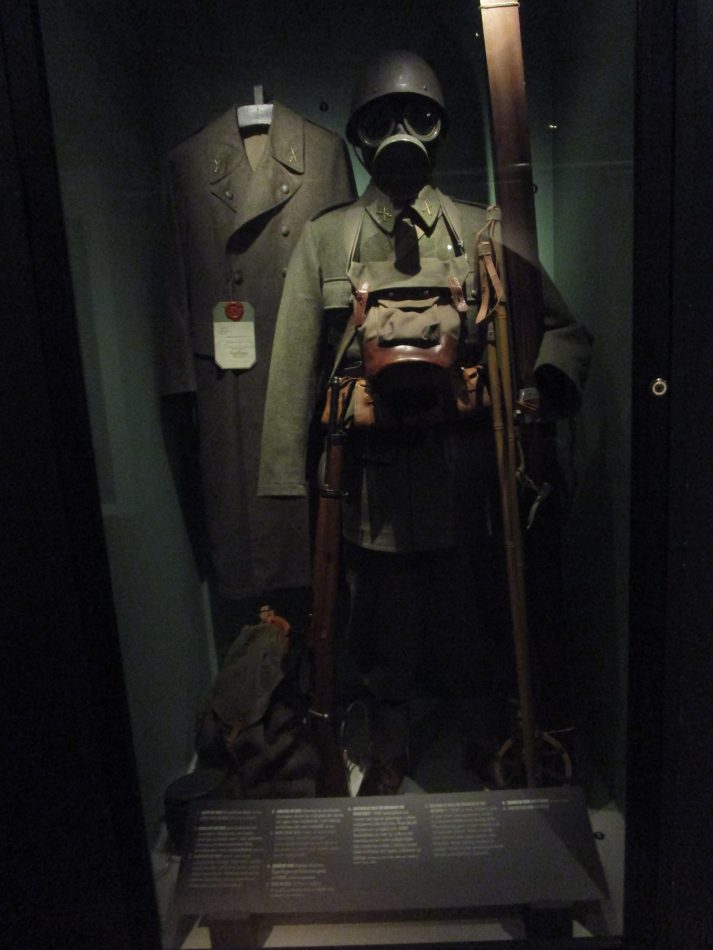
Sweden supplied arms to all sides participating in WW2. The museum did display weapons from other countries as well. I’m only showing a couple of the more hard-to-find items. Here is the Finnish 20mm Lahti anti-tank rifle, which was used by the Finns to great effect against the Russians in the Winter War.
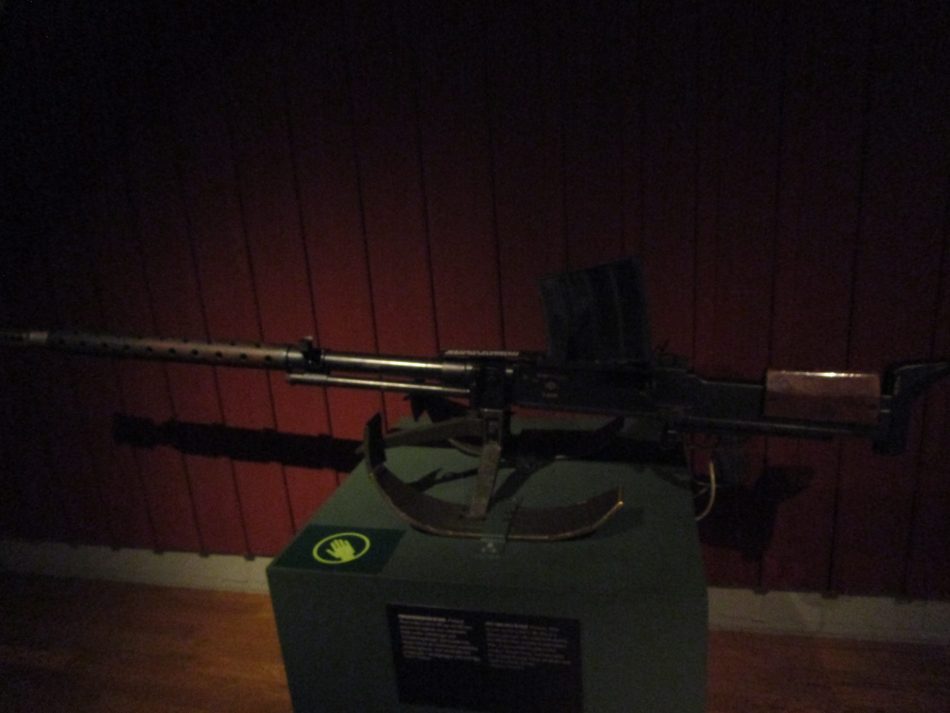
This is something that most museums don’t have. It appears to be a Goliath remote-controlled anti-tank mine.
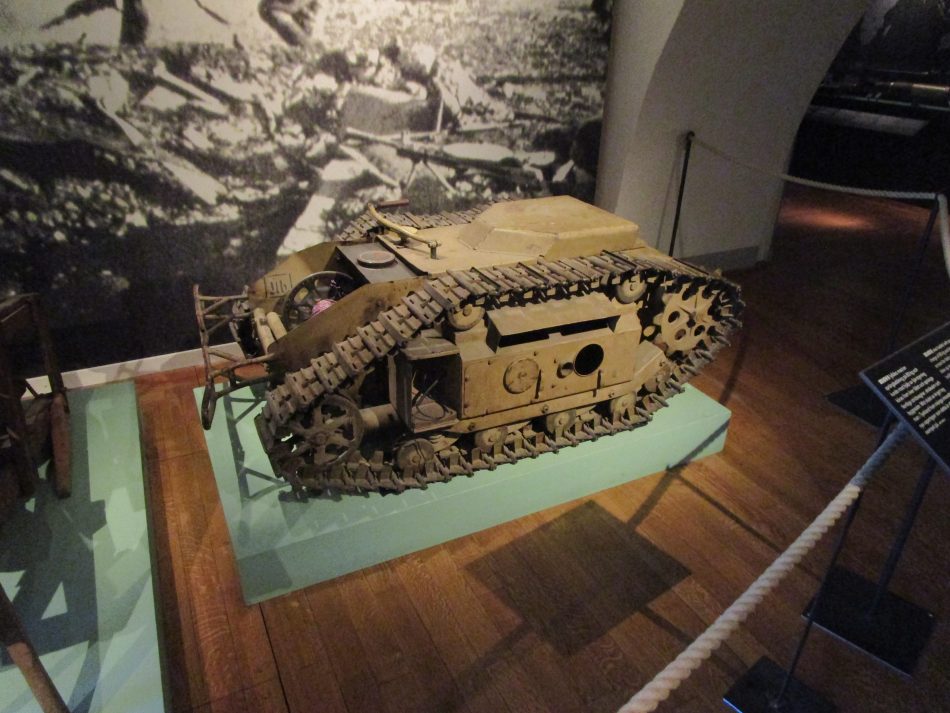
The second last area covered the Cold War. Here is a Swedish combat uniform before they went to a camouflage pattern in the early 1990s.
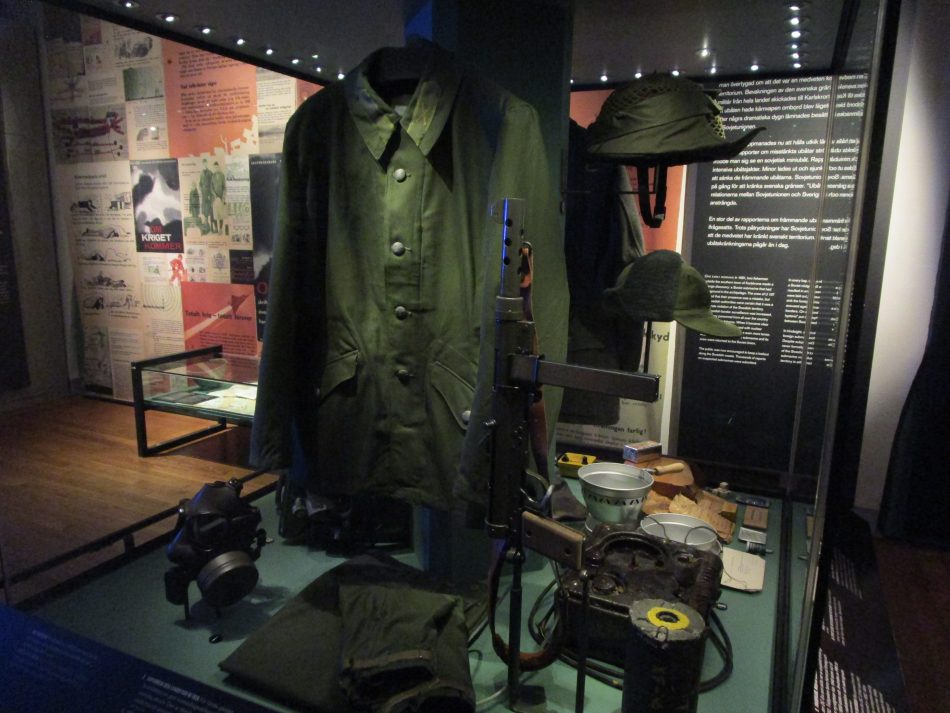
I find army rations fascinating, so I made sure I took photos of the two on display. For those who are interested, type in “MRE Reviews” in YouTube and you would be surprised how many reviewers are out there. The first one shows an older ration. Essentially both rations are the same, but the newer one is more attractively packaged.
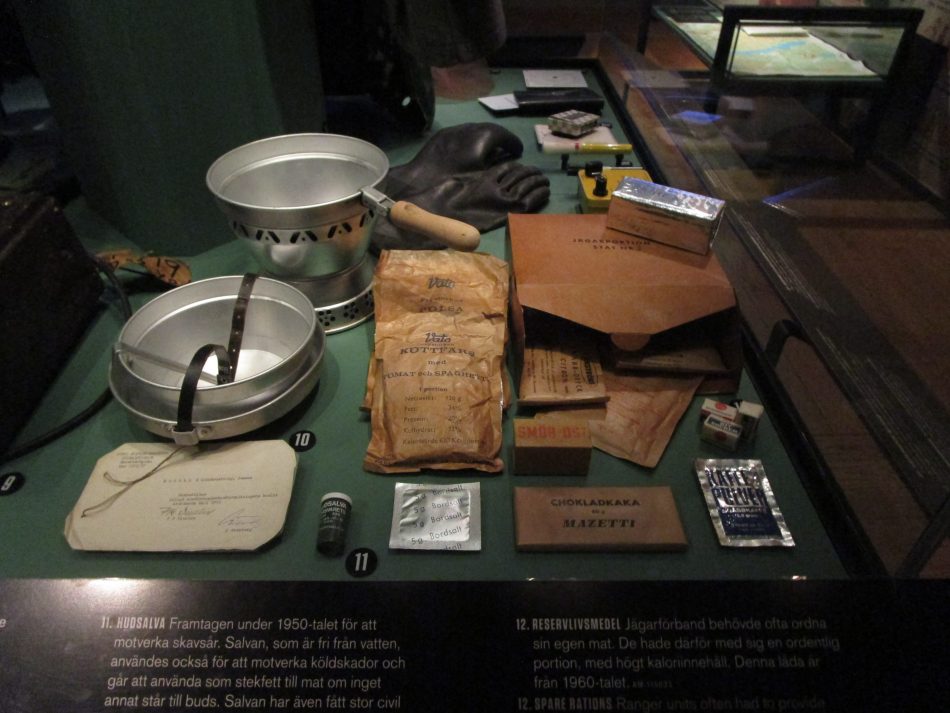
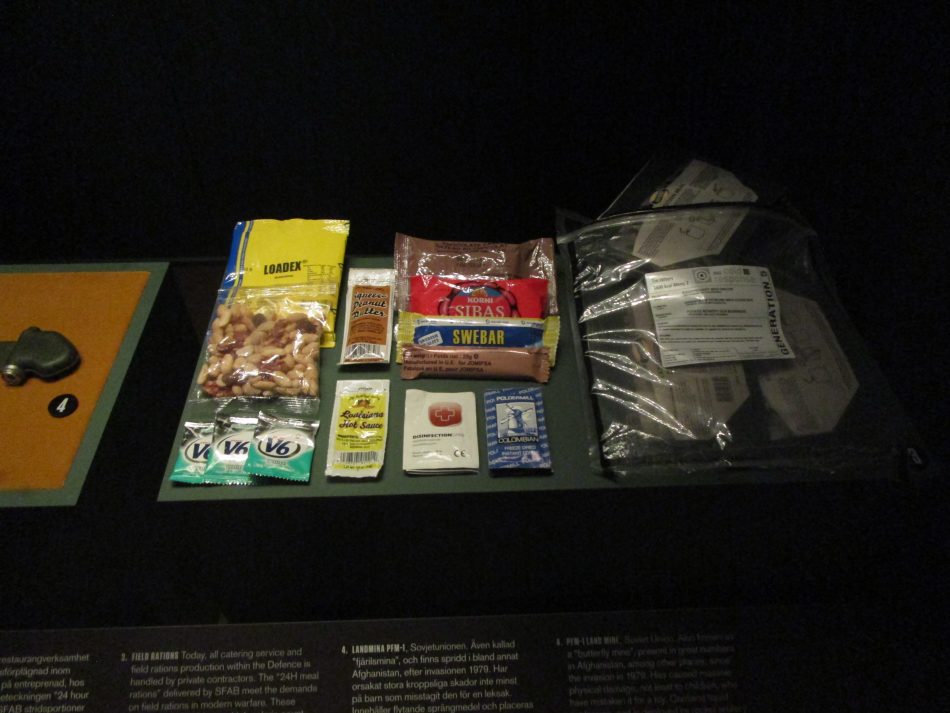
Swedish soldier in desert uniform from Afghanistan.
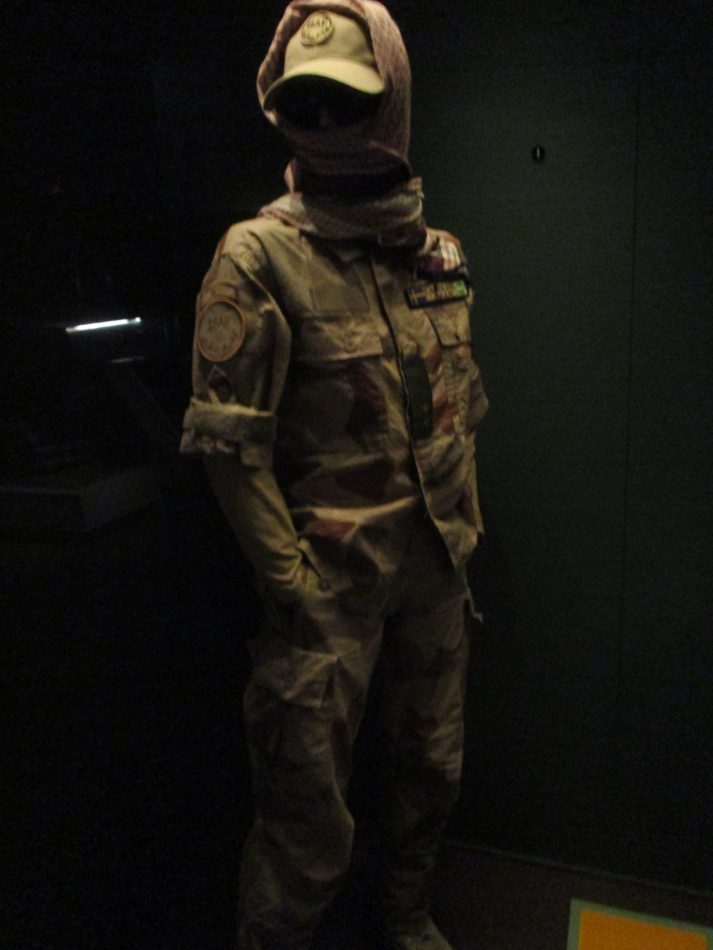
The famous Swedish BV-206. You were actually allowed to climb into the trailer part of the vehicle.
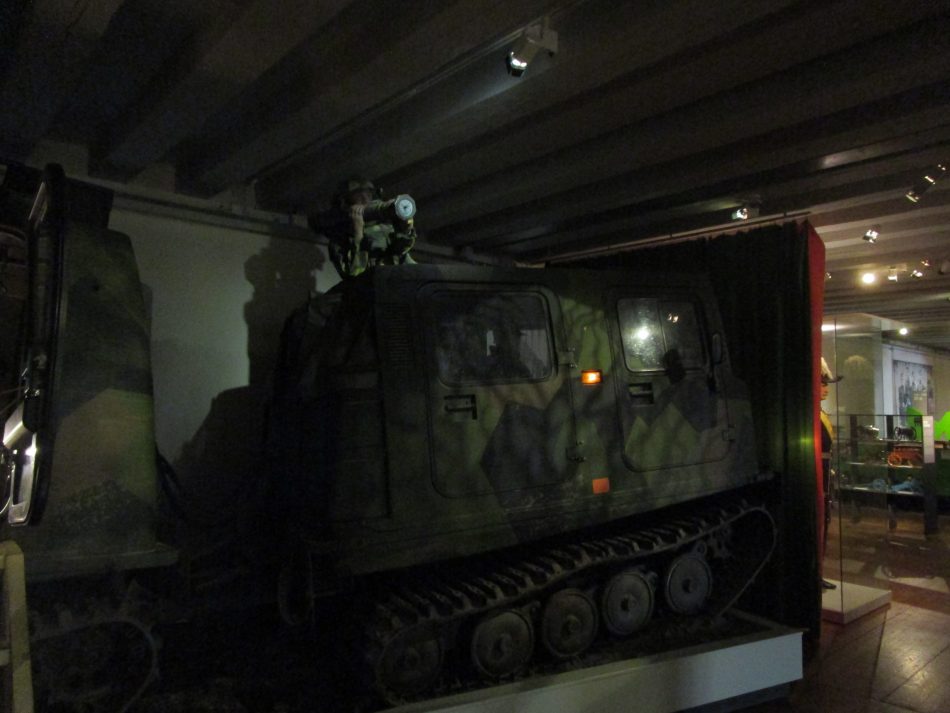

They had rooms with weapons. Most of them were quite common, but I did take a photo of the Swedish army’s AK 5 assault rifle. It is based on the Belgian FNC.
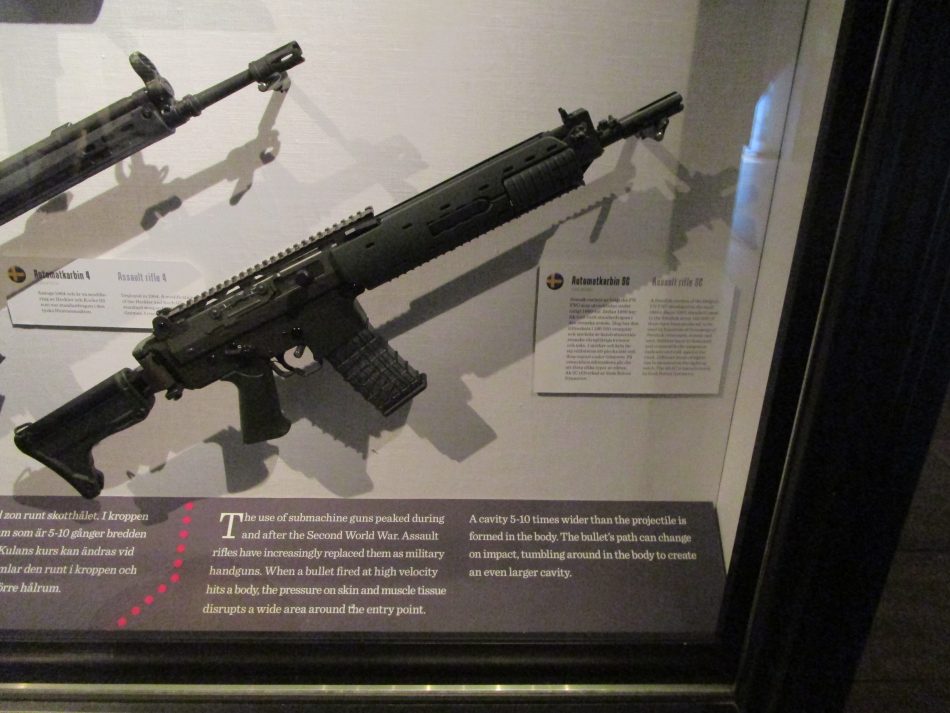
I wasn’t impressed with the gift shop. In Oslo and Copenhagen, I was able to buy souvenir-painted soldiers in the 6 to 10-inch range. But they had nothing like this in Stockholm. They did sell hot sauce with a name that I won’t write here for some polite reasons.
Outside the museum, there was a group of Ukrainians who were making camouflage nets for the war in Ukraine. They were accepting donations and/or you could help out making the nets.
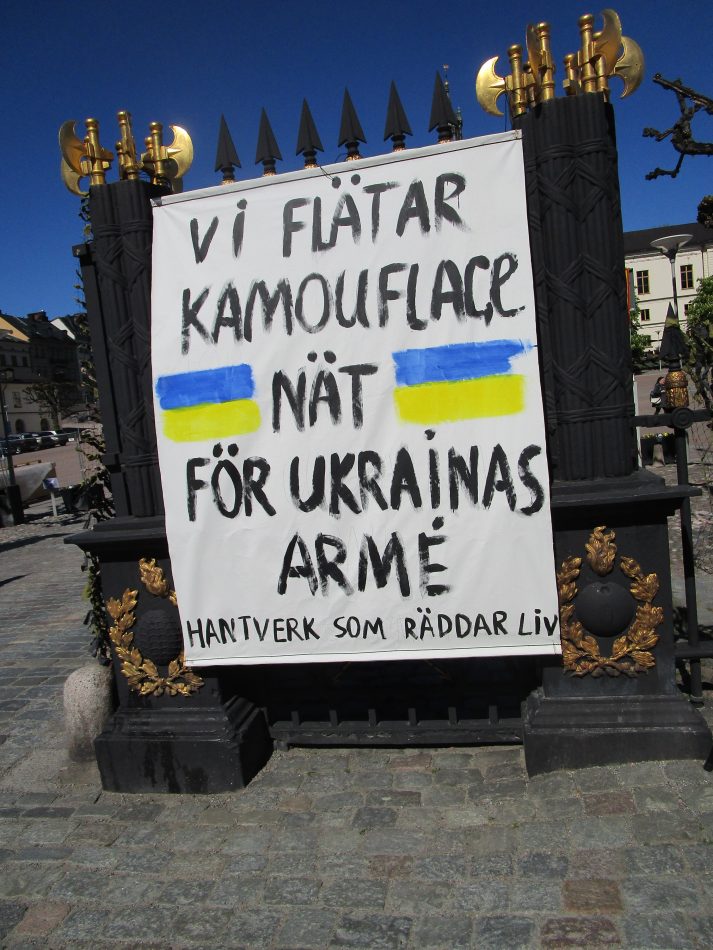
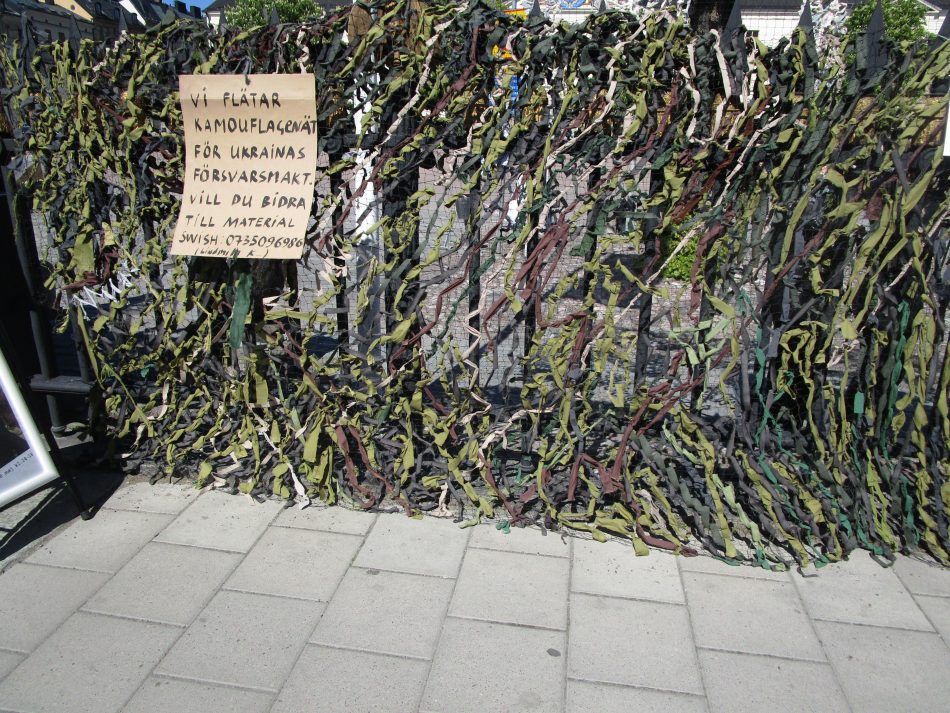
Another event I would recommend seeing is the Changing of the Guard which takes place at the outer courtyard of the Royal Palace most days depending on the season. Its only a short walk from the museum. I would check the schedule and start times on the website so that you are not disappointed.
Changing of the Guard – Swedish Armed Forces (forsvarsmakten.se)
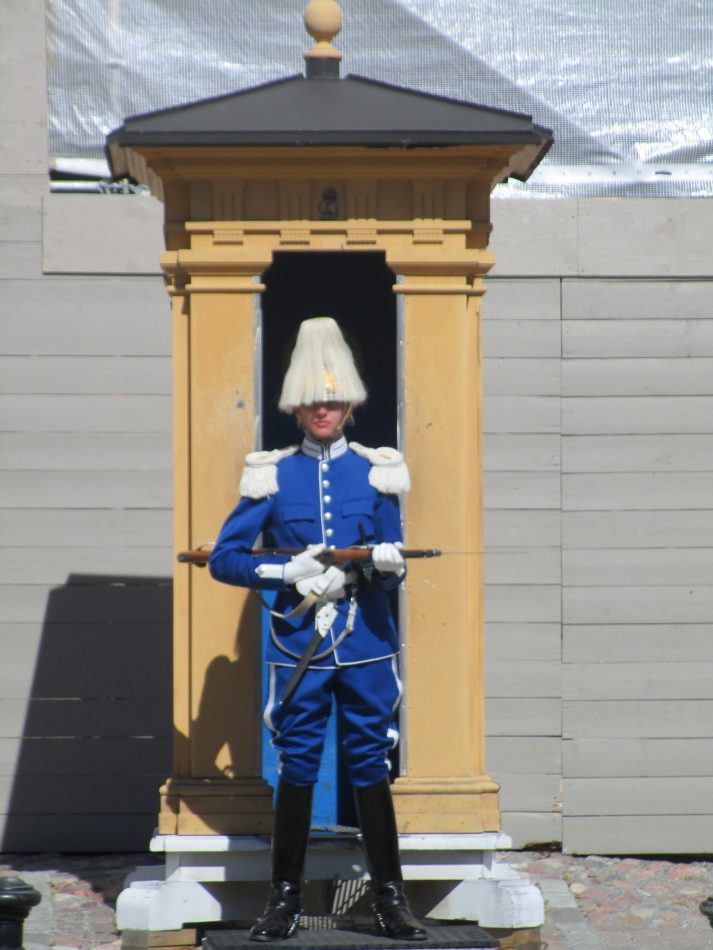
The old guard was a cavalry unit. You can tell by the carbines and the cavalry pants. I like the way they got on parade. They merely appeared from the barracks in the background and ran to their positions. The complete opposite of what I will be seeing in London. I understand that usually the guards will march from the Army Museum or Cavalry Barracks, but the day I was there they didn’t do that march. Possibly because the King of Sweden was hosting the President of Finland and there were a lot of road closures downtown and other troops were on parade supporting other ceremonies.
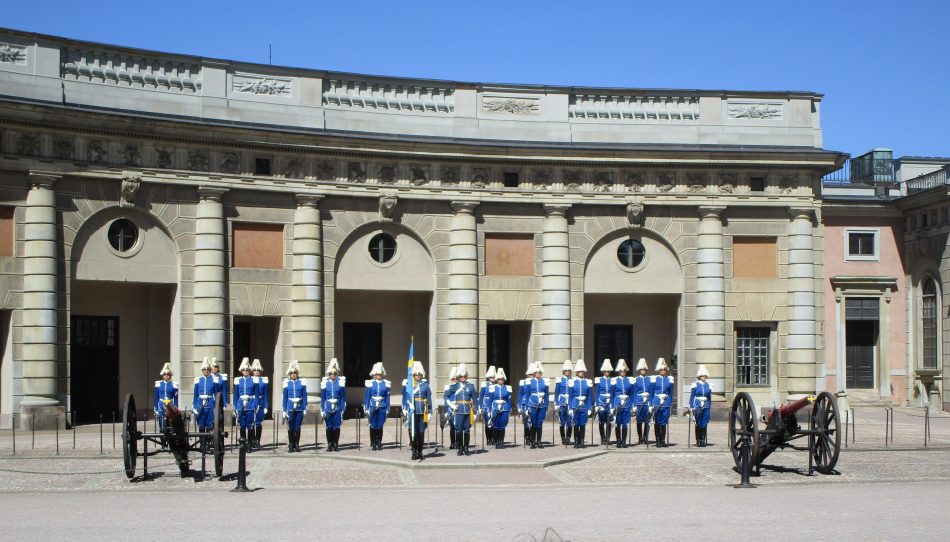
The new guard was I believe one of the Swedish Life Guard units. Here they are conducting the handover. Throughout the ceremony, there is an announcer explaining everything in Swedish and English.
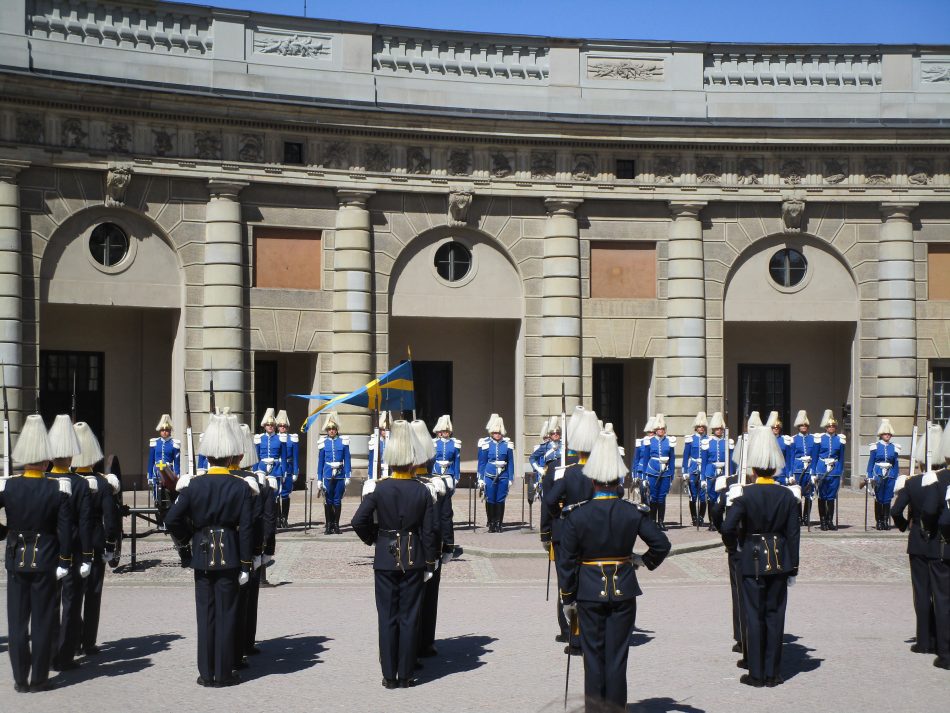
The new guard in their positions. After the ceremony, the band played some music, including the theme from Band of Brothers. I must say they were very good. I liked the ceremony. It took place a faster pace than British or Canadian parades take place and that is a good thing. Their drill was very sharp and its always interesting to see how other armies operate. The courtyard is quite small, so I’d get there a bit early in order to find the best sightlines. There is no admission cost and I certainly recommend seeing the show.
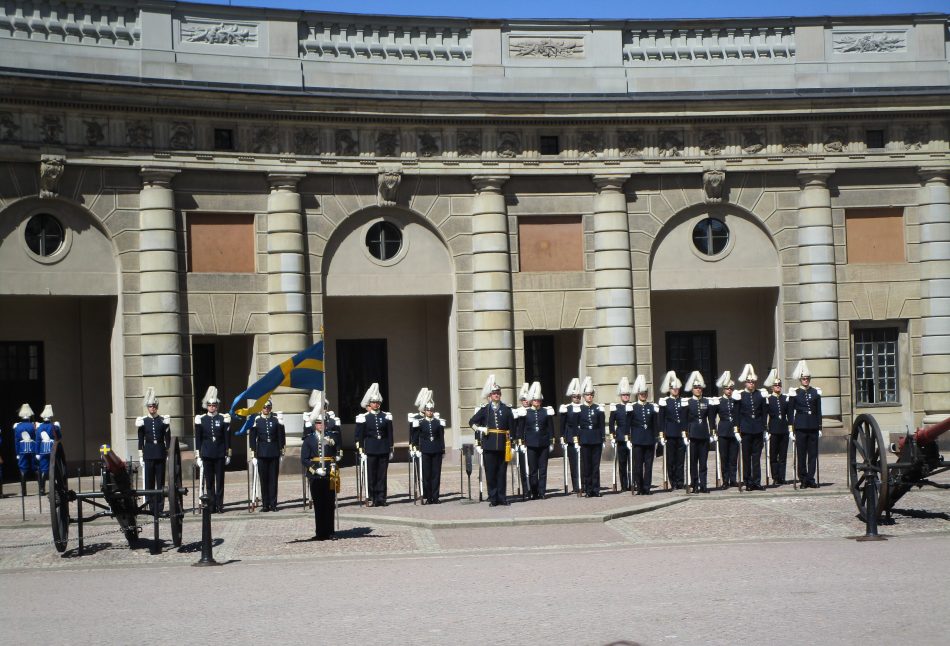
While in Stockholm I also recommend seeing the Vasa Museum. For those who aren’t familiar with the ship’s history, it sank in Stockholm harbour quickly into its maiden voyage. It was too heavy for its narrow width and it went down with all but 30 of its crew. The actual ship was resurrected and put on display as a museum. The museum is located in Djurgarden Park along with a number of other museums including the ABBA museum. During the summer it will cost you about $19 USD to visit. Admission includes guided tours in multiple languages including English.
Welcome to the Vasa Museum (vasamuseet.se)
The photos I took don’t do the ship justice. It was very ornate and full of minute details. Whereas I was one of the few guests in the Army Museum, the Vasa was full of visitors of all ages and interests, even at the Vasa warship. It is a must-see in Stockholm.
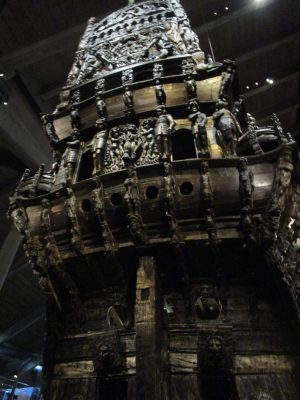

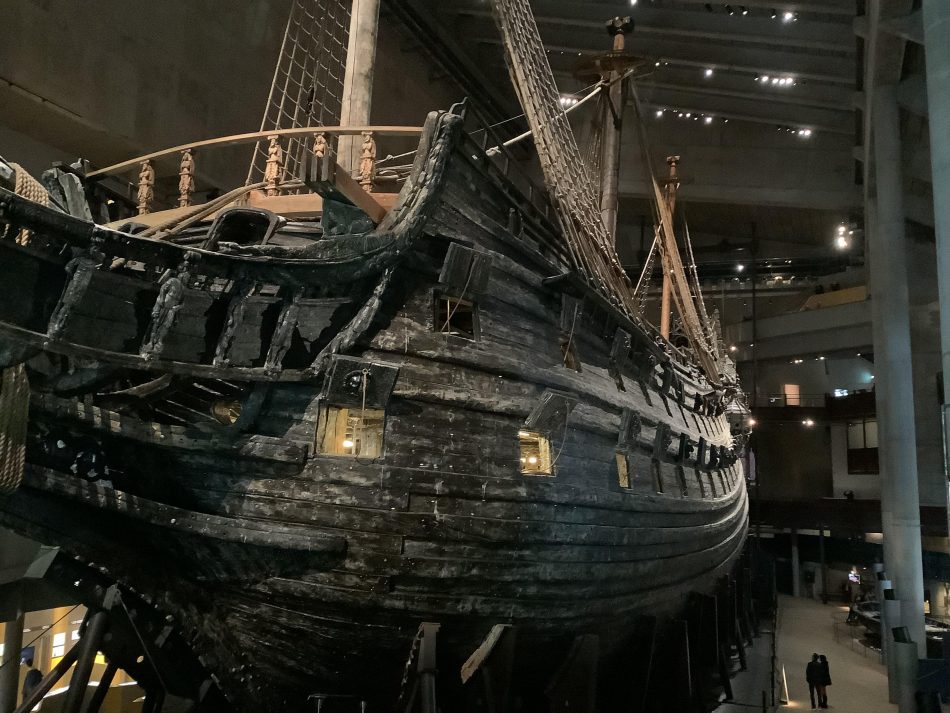
I wouldn’t rate the Army Museum as a must-see, but merely recommend visiting if you have the time. Perhaps it’s because the most exciting periods of Swedish military history were so long ago and there is so little to tell about the last 200 years. I wish they would have shown more about today’s Swedish army and some of its larger pieces of equipment. I’m still glad that I went, along with the Vasa Museum and the changing of the guard ceremony. Stockholm is a must-see city. And hope that you have at least two days. Even though it’s a compact and walkable city, there is just so much to see.
Next up will be my visit to the Waterloo Battlefield.
